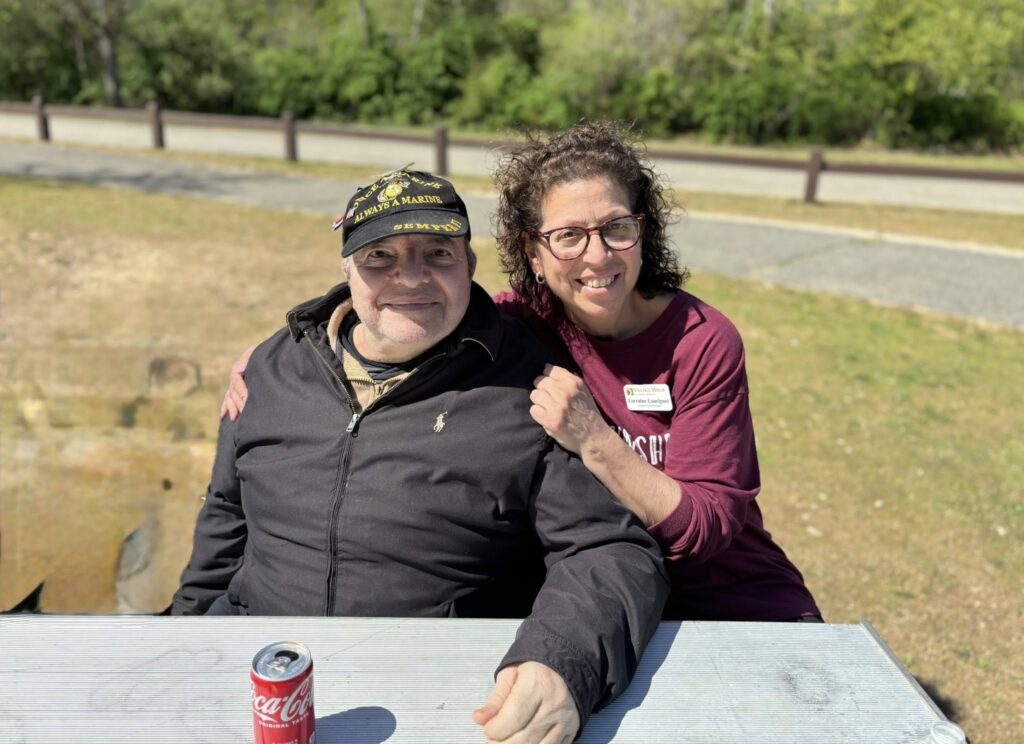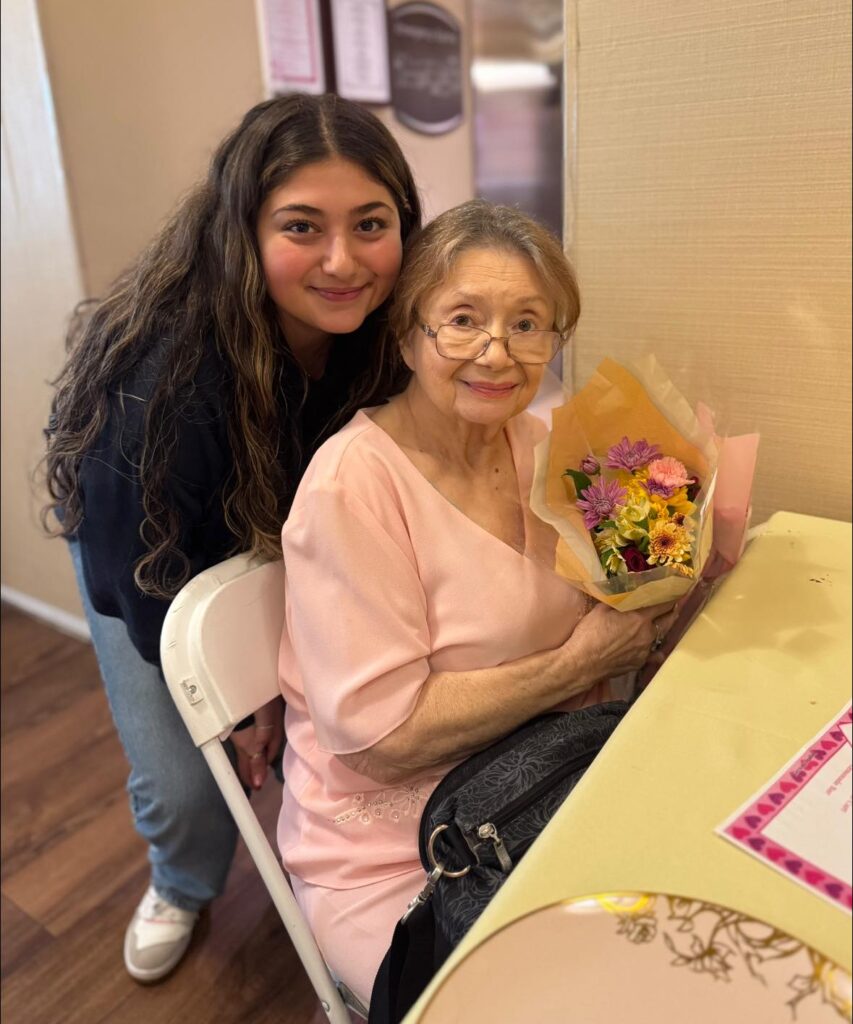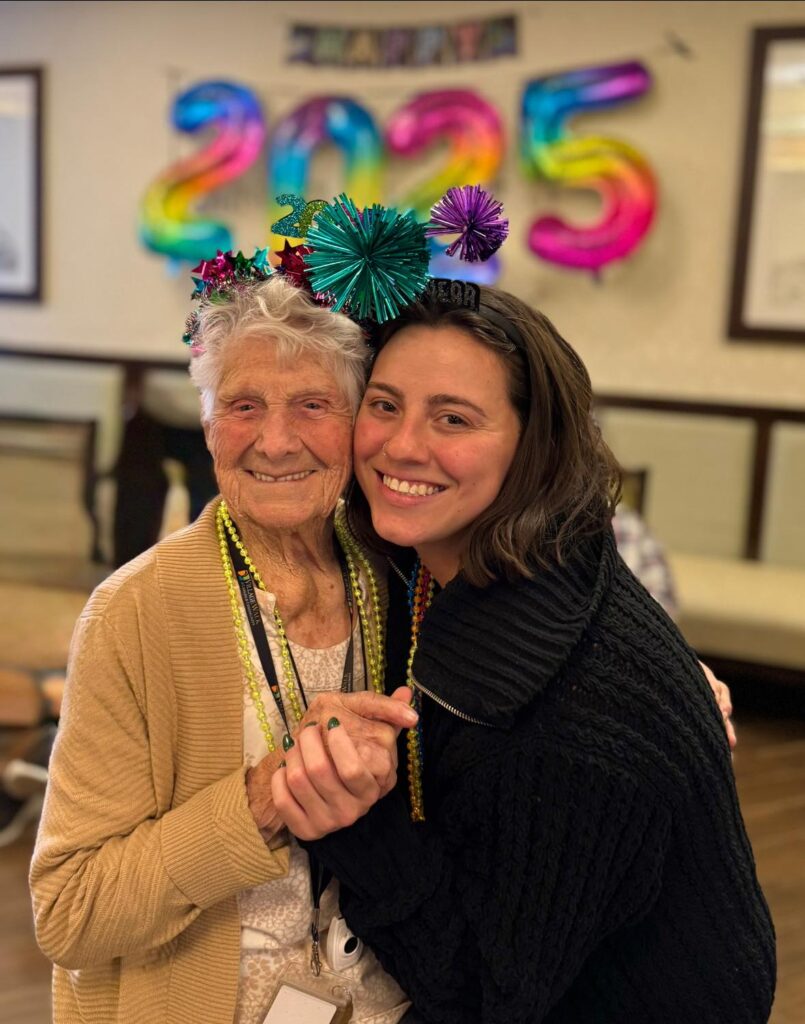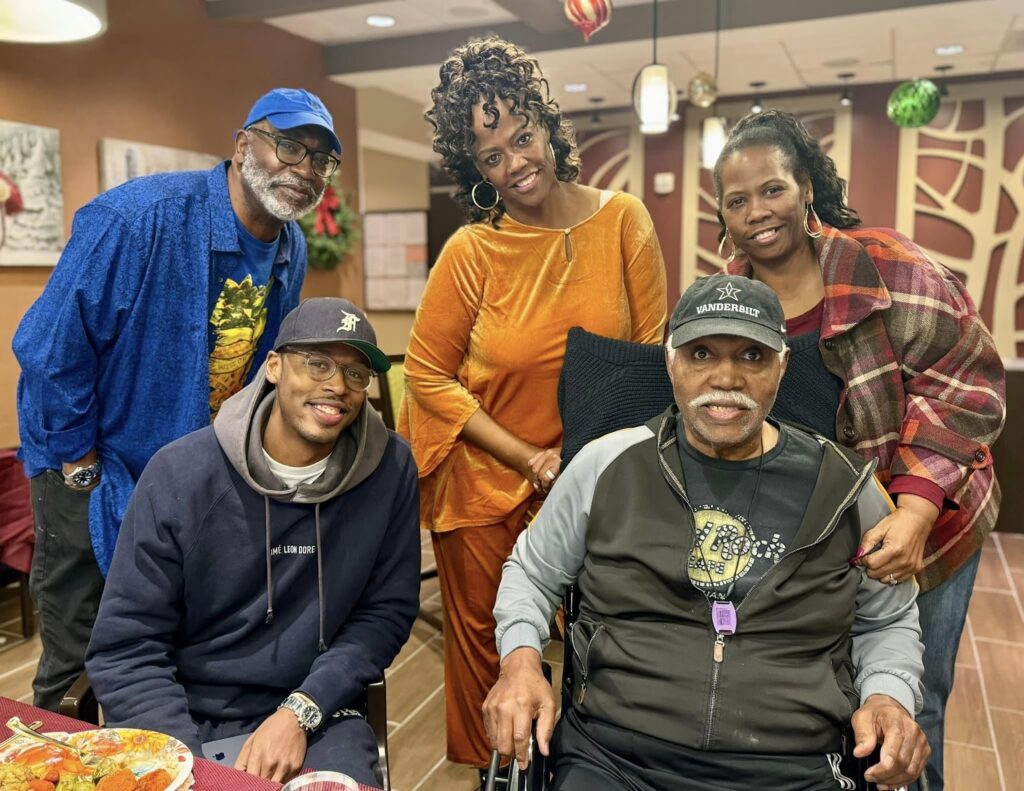What is “Level 1” Level of Care in Assisted Living (Seniors)?

You may have heard of assisted living care before. You may even have heard such sentiments as, “My loved one needed the highest level of care possible,” or “They needed ‘level one’ care.” If you’re still wondering, “What is level 1 care in assisted living?” you’re not alone. Understanding the gradations of different care at assisted living communities can sometimes be just as challenging to parse through as the fine print of healthcare insurance. Without proper help and information, you can find yourself signing up for care that’s far below — or above — you and your loved one’s needs. And, the last thing we want is to see you spending your hard-earned dollars on a service package that doesn’t fit you and your loved one’s needs. Not to worry, though. Our senior living experts are here to make the distinctions between each level crystal clear. In this article, we’ll walk you through some of the most common levels of care in assisted living, including what sets them apart from each other. Join us as we explore three of the five main levels of care in assisted living, with particular emphasis on the first level of care. Table: The 5 levels of assisted living care Most assisted living facilities provide five levels of care in an assisted living community. Three levels of care tends to be the baseline level of care provided regardless of the type, licensure, or training of the facility. The five levels of care can be summarized using this handy table. Level of Care Care Description Who’s Best Suited to this Level of Care Level 1 Basic support and residential care with activities of daily living (ADLs) are provided to those who need it Seniors or older adults who are mostly independent but need a small amount of help with ADLs. Level 2 Moderate support with ADLs and a handful of reminders regarding medication management Seniors or older adults with increasing care needs but not complex care for complex medical issues Level 3 A significant amount of support monitoring for mobility issues, bathing and grooming, and medical concerns Seniors or older adults who need hands-on support throughout the day Level 4 A higher amount of care that often involves memory care and behavioral supports Seniors or older adults with dementia, Alzheimer’s, or other memory loss-related conditions Level 5 intensive nursing care, medical care, and round-the-clock bedside care. Seniors or older adults who need skilled nursing or who may be nearing the end of their life. Understanding the 5 levels of assisted living care Many assisted living communities offer a range of care levels to accommodate the unique needs of their residents. So, how are these care levels determined? The lower the levels, the less hands-on care that’s needed. The higher the levels, the more care that’s likely needed from assisted living staff. When we talk about assisted living care, what we mean is: In most assisted living communities, you’ll find three levels of care, namely: Let’s dive deeper into each level. About level 1 care: minimal level of care Level 1 care relates to older adults who are, for the most part, independent but need support in personal or health care-related areas. For example, a person receiving level one care might need the following: Many individuals who need level one care don’t necessarily need help remembering to do activities as much as they do making sure they’re done correctly. About level 2 care: moderate level of care Level 2 care is for individuals who need a bit more help or support in several areas of health and personal care. Examples of level two care include the following: Assisted living residents who need level two specialized care often may be able to participate in one activity of daily living without an issue — such as making meals — but need help in another area — such as getting up and off the toilet. What’s more, the care offered with level two care may also include support with transportation, carrying out medical treatments, managing behavior, and other health conditions. About level 3 care: significant level of care Level three care is for older adults and seniors who need extensive help in most areas of their personal lives. Many residents in our facility receive care that addresses health care needs. Examples of level three care include: If you or a loved one lives with mental or physical impairments that affect your living experience and ability to perform daily tasks, level three may be best for you. In other words, level three care is provided by multiple caregivers to meet the various needs of the person receiving said care. How to assess the need for assisted living care The easiest way to assess if someone needs assisted living care is through assessment at an accredited assisted living community. With that being said, before you do so, you’ll also want to observe for and ask yourself if your loved one has trouble with any of the following: If you notice any of the above, we recommend reaching out to a healthcare provider and consulting with a senior living advisor. Both parties will be able to inform you as to whether comprehensive care is needed at an accredited assisted living care community. Curious to know what assisted living activities look like? Here’s a fast statistic. As of 2020, nearly 1.2 million licensed beds were available for assisted living, according to the Center for Disease Control (CDC). We’ve been honoring the growing assisted living community in a number of ways. For example, our residents kicked off National Assisted Living Week by setting out on an all-day adventure across Long Island to complete their Adventure Passports! From the charm of the Big Duck in Flanders, to breathtaking views at the Fire Island Lighthouse, the historical stories behind Jones Beach, a taste of tradition at Umberto’s Pizza of New Hyde Park, the elegance of Oheka Castle, and the Long Island Welcome Center, it was truly
Average Life Expectancy (And Length of Stay) in Assisted Living

Considering moving you and/or your loved ones to assisted living? Consider this: the average life expectancy in assisted living facilities is about 22 months, with 60% of residents transitioning to more skilled care after (American Health Care Association/ National Center for Assisted Living, 2025). When seniors don’t receive the right care, they may reduce their chances of living a long, happy, and healthy life. So, we understand if you’re looking to make sense of the average length of stay in an assisted living facility. But what factors affect the average length of stay and life expectancy of a senior in an assisted living facility? What other options exist for those who’ve moved on from assisted living and need extra care to thrive? Village Walk here: our senior care specialists pooled our resources and created this article to answer the question, “What’s the average life expectancy and length of stay in an assisted living facility?” In this article, we’ll discuss: Factors that affect the life expectancy of seniors in care facilities 1. The types of healthcare provided2. The types of support for activities of daily living (ADL)3. The cost of care4. The levels of care provided at the facility5. The need to transition to higher levels of care The average length stay in an assisted living facility As mentioned above, the average length stay in an assisted living facility is about 22 months. With that being said, this number varies depending on a few different factors: As such, not all seniors live the same lifestyles, so a great deal needs to be said about the dietary, lifestyle, and activities that occupy a person’s life. 3 factors that affect the average stay (or expected stay) We’ve noticed that three factors tend to affect the time a senior lives in assisted living facilities. Those three factors include the following: Let’s dive into each in greater detail in the sections below. 1. More seniors are opting to move later We understand that moving out of a cherished home after years can be, well, a lot of things. Stressful, scary, and challenging are just a few words that describe the move. Many seniors are either opting for longer in-home care, don’t see a need to move, or prefer to stay at home. Oftentimes, seniors prefer to live at home because they feel they can meet their current needs to a greater extent at home. More often than not, many prefer the lifestyle they live at home and feel that moving to an assisted living facility might change their ability to be independent and live as they please. Our team honors, respects, and nurtures our residents’ desires to live independent, full, and quality lives. Our Village provides top-quality care in a safe, comfortable environment where you can feel free to live as you wish or in the comfort of your peers in a warm, compassionate environment. Nevertheless, many seniors also feel they may not want to move to an assisted living facility because they’re dissatisfied with their current level of care. We’ll turn to this topic next. 2. Seniors may be dissatisfied with their current level of care Families and seniors often move to other care facilities when they’re not satisfied with their care options. More often than not, families leave to go to a different community or to receive a different type of care. Part of determining the right type of care for a senior is to consider what types of care the facility can offer. One reason that seniors often leave is because they’ve found that their current care community isn’t able to provide for their evolving needs. The best assisted living communities offer different types of care levels and opportunities for seniors to engage in their favorite activities and hobbies. In general, senior care facilities tend to provide three different levels of care: Someone receiving level one, low-level care can usually perform most ADLs on their own, but they might need gentle reminders to do so. A person receiving mid-level, level 3 care might need help with a few ADLs. For example, they may be able to walk on their own, but they’ll need help taking a bath. What’s more, they may also need help with balance, as they’re prone to falls. Finally, residents who receive high-level care need help with everyday tasks. These residents may need help from more than one caregiver and need reminders for most ADLs. When a senior needs extra care beyond high-level care, sometimes all that’s needed to make a change is to know the difference between assisted living and memory care and make the choice that’s right for the senior. And the best assisted living facilities provide different plans and pricing to ensure residents can live in a place that includes everything they need. 3. Money becomes an issue Speaking of plans and pricing, we understand that money can be a touchy yet important subject when considering the average length of stay at an assisted living care community. Insurance doesn’t often cover the specific facility or care that’s needed, or the rise and fall of the market’s prices means families and seniors must seek more affordable care options. With that being said, assisted living is one of the most affordable care options on the market when compared to skilled nursing care, memory care, and in-home care. The best assisted living communities provide financial aid to support individuals with their evolving care needs. The average cost of care According to a 2024 Genworth and CareScout study, the average monthly cost of a private, one-bedroom apartment in an assisted living community was $5,900. This number includes amenities such as the following: Given the $5,900 monthly fee, assisted living tends to be one of the most affordable care options for those who need long-term care. Other potential options for moving out of assisted living Nevertheless, some seniors opt for other care options beyond assisted living. One of the factors that influences the decision to change is that seniors need care that extends
How Assisted Living Residential Care and Long-Term Care Facilities Work

So, you know that you’re looking into assisted living, but you’re not exactly sure where to start. How do assisted living facilities work? You might wonder. And, what’s included in assisted living facilities? With the market for assisted living expected to grow over the next five years, according to MordorIntelligence.com (2025), more options mean more questions. We understand that finding helpful information about assisted living isn’t always so clear-cut. We’re here to help you find the right information so you can make a clear-cut decision. Village Walk senior living here. In this article, we’ll discuss how assisted living facilities work, including: Seniors’ rights at a senior care assisted living facility Who is best suited for assisted living facilities? Seniors who are still able to do tasks on their own. Although this type of senior might be independent, assisted living facilities will provide them with quality care to support with tasks like medication management, bathing, dressing, and eating. The safe and supportive environment of an assisted living facility allows seniors to receive the help when they need it for all dimensions of wellness, while still allowing independence. Some of the rights that seniors in assisted living facilities have access to include: While not an all-encompassing list, long-term care facilities provide personal care and supportive services that support the well-being of their residents. Assisted living facility’s living arrangements, services, and amenities Assisted living facilities provide quality living arrangements, services, and amenities to older adults. Most assisted living facilities are furnished with the comforts of a modern home, such as kitchens, living and dining areas, and private or shared rooms, depending on the resident’s preference. Residents may choose from residential living spaces such as one-bedroom apartments, studio apartments, dorm-style pads, and more. Some residential care communities even provide extra services for residents in need, such as physical therapy or outings into town. Usually, the standard services assisted living communities provide their residents include: Of course, every facility differs in its offerings. Depending on the facility, recreational directors will also create activities based on residents’ interests. Assisted living costs associated with long-term care facilities The costs of assisted living care services depend on the facility. The most basic price usually includes the services mentioned above. But, if your loved one needs other services — such as hair, nails, or specialty care — you can expect to pay a little more. For many of our residents, families speak with our management team regarding the pricing of extra services. With that being said, assisted living facilities tend to cost less than nursing homes since assisted living facilities provide housing and basic care to seniors. The size, location, and living arrangements of a facility affect the total cost of assisted living facilities. Help is always available, though. For example, government programs such as Medicaid, Social Services Block Grants, or Supplementary Security Income can help cut the costs of assisted living. In fact, a few states also allow you to use tax-exempt bonds or Low-Income Housing Tax Credits (LIHTCs) to cover the costs of assisted living. Have long-term care insurance? No problem. Long-term care insurance can also help cover the costs of assisted living facilities. With that being said, you won’t be able to use Medicare to cover the costs. Nevertheless, financing options exist to help residents and their families pay for assisted living. The quality of care with assisted living facilities “What type of care can my finances get me?” You might wonder. The truth is that the quality of care with assisted living facilities depends on the policies and regulations of the facility. As assisted living communities increase in number, most states and municipalities have worked to create regulatory systems, tweaked their systems, and/or raised administrative and staff qualifications. With that being said, the quality of care will depend on the above-mentioned factors. Other factors that affect the quality of care in assisted living facilities include Furthermore, the quality of care also depends on the number of staff hired, the services offered, the number of residents in the community, and the size of the facility. Common staff members at living and skilled nursing care facilities include caregivers, nutritionists, administrators, physical therapists, medical teams, wellness and health directors, and beauticians hired at the facility. As you consider assisted living facilities, we recommend keeping in mind the following questions that can affect the quality of care you and your loved one will receive: By clarifying the answers to these questions, you can place yourself and your loved one to receive higher-quality care. A Village moment American Health Front is the longest-running medical news program on network television regarding American health. American Health Front has been educating households across the country about health outcomes since 2002. We were lucky enough to work with them! This quick two-minute video gives you just a small taste of everything Village Walk’s assisted living community has to offer to seniors and their families. For more pictures about our community, services, and amenities offered to our residents, check us out on our social media account. Need more information about assisted living? If you’re looking for more information with long-term care services, personalized care, or the levels of care and daily living conditions of assisted living communities, we invite you to stop by for a complimentary tour of our facility. Our caregivers have more than 20 years of experience providing loving, compassionate, and quality senior care and support for residents with dementia and a host of other conditions. Best of all, our memory care caregivers are available around the clock when residents need assistance late at night. If you feel you’re not able to provide help for your loved one’s care needs at home without extra care — and they need more help with activities of daily living — it might be time for assisted living or home care. For a complimentary tour of our facility to explore our care plans and all that our assisted living community offers, contact our team today. Lunch
Seniors: How to Evaluate Assisted Living Facilities (Key Questions)

Thinking about assisted living for you or a loved one? Before you pull the trigger on an assisted living facility, we want to make sure you’re set up for success in this next exciting chapter of your life. On the one hand, you could offer to help yourself as your loved one’s primary caregiver. On the other hand, an assisted living community can offer complete care services and the companionship of a community, which will be beneficial for the journey ahead. Either way, we understand that finding the best assisted living arrangement for your unique situation can be challenging. But not to worry, because we’re here to help. Village Walk here: for more than 20 years, we’ve been helping older adults and their loved ones with finding the right care solutions for their needs. In this article, we’ll show you how to evaluate assisted living facilities so you can make the right decision for you and your loved one’s needs. Some of the most expeditious and fruitful ways of evaluating assisted living facilities include: Questions to help you evaluate assisted living facilities 1. Does the community hold Medicare certifications?2. Is the community licensed by the state?3. How accessible is the community for individuals with disabilities?4. Do the residents look happy, well-cared for, and satisfied?5. How does the staff interact with the residents? How clean is the community? Start with your loved one’s needs and wants If you’re wondering where to start choosing assisted living facilities for you or a loved one, consider asking yourself: what services are needed now and in the future? For example, an older adult may need help with everyday activities, physical therapy, nursing care, hospice care, dementia, or memory care support. With that being said, every community caters to different needs. As such, you’ll want to reach out to a healthcare provider and your loved one to determine which services would be most helpful for you and your loved one. Once you’ve determined your loved one’s needs and wants, consider which features would be important to your loved one. You can have a chat with your loved one and ask them about the following: Once you and your loved one are clear on the ideal features of an assisted living community, it’s time to start reaching out to other trusted loved ones to determine the next steps. Reach out to friends, family, and trusted loved ones in your area Why do we mention reaching out to friends, family, and trusted loved ones if the decision is yours to make? The truth is that friends, family, and others in the area can help provide testimonial feedback on long-term care facilities they’ve experienced. They’ll tell you whether they were happy with the community, whether the community has quality care support, and much more. For example, you can reach out to health care providers, social workers, religious groups, and support groups in your community who are familiar with the assisted living community you’re considering. Alternatively, if you’re looking for other options for your and your loved one’s healthcare needs, you can also rely on trusted loved ones and healthcare professionals to suggest other quality residential care communities worth considering. Reach out to and visit different assisted living facilities in your area Now that you’ve determined your loved one’s care needs and compiled a list of questions to ask your friends and trusted loved ones, you’ll want to identify a few facilities of interest to contact. Reach out to each place on your list, and ask questions about how many people live in the community, the cost of care, and whether they offer multiple levels of care. Also, consider mentioning any needs and preferences you have about the care provided, as well as other on-site activities that are important to you and your loved one. Consider also asking whether the facility offers immediate availability or if a waiting list exists to sign up for their services. Before making your decision, you’ll want to visit several communities in person to familiarize yourself with the facility’s operations and residents’ opinions about the community. On tour day, make plans to meet the director, the nursing director, and the director of life enrichment at the facility. Also, you might consider looking for the following: Follow up with different assisted living facilities After you’ve made your first visit and observed all these key details, make a second unscheduled visit, preferably on a different day of the week than the day you visited. Why? Because you’ll be able to attend different activities, observe different meal times, and assess whether the food looks appetizing and the community’s common rooms are clean. When you make an ad hoc visit, you’ll see how life looks when the community isn’t preparing for your visit. Doing so will tell you a great deal about how the community conducts itself from moment to moment. Ask questions about the facilities during visits What’s more, when you’re visiting, don’t hesitate in asking questions. In our eyes, no question is trivial, and all inquiries are welcome (and encouraged!). Ask about anything important or of concern to you and your loved one. If you need a little inspiration, here are a few ideas for questions you can ask the staff: The more you can ask questions, the better feel you’ll have for the living options available to you and your loved one. Consider asking questions to discover all that assisted living facilities offer. Inquire about upfront (& hidden) costs and contracts Every facility is different with fees and contracts. So, you’ll want to determine which services are and aren’t included in the costs. What’s more, you’ll want to ask about different ways to cover the cost of care. The facility often has a finance or business office manager who can help you determine what help is available for you and your loved one. Whether you’re using long-term care insurance, private funds, or community-sponsored support, you’ll want to read contracts carefully. Make sure all the agreements are
What is Memory Care for Seniors (Senior Living Care Options)?

Memory care for seniors is specialized support for individuals 55+ with memory loss-related conditions such as dementia and Alzheimer’s. Not to be confused with assisted living, memory care offers a crucial service for seniors who need continuing support for most activities of daily living. You’ll want to know the difference between memory care and assisted living for seniors so that you and your loved one receive the right help for their needs. Otherwise, you could find yourself shelling out money for a service that doesn’t fit your needs. Not to worry, though. We’ll unpack what memory care for seniors looks and feels like in this article. If you’re wondering what memory care for seniors is like, then this article and educational resource is for you. Join us! In this article, we’ll discuss: Key aspects of care communities for seniors 1. The physical environment of the facility2. The quality of staff3. The types of activities and food provided4. The types of healthcare and extra amenities provided The scope of memory care What exactly do we mean when we say “memory care?” What’s involved in the overall scope of memory care? Memory care is designed to provide safe, structured environments with routines to help lower stress for people with Alzheimer’s, dementia, and other forms of memory loss. Who exactly delivers memory care services? Stand-alone facilities and many assisted living facilities, continuing care retirement communities, and nursing homes provide special memory care spaces — often dubbed memory care “neighborhoods” —for dementia patients. Each memory care facility houses recreational staff to run art and music activities that help improve, maintain, and engage cognitive functioning in residents at different stages of their life journey. What’s more, memory care facilities also tend to have alarmed security systems, doors, elevators, and other systems that require enclosed outdoor spaces to ensure the safety of residents within the perimeters of the facility. Especially since many people with dementia tend to wander, memory care communities will provide tracking bracelets or necklaces that give residents the freedom to explore the facility while giving staff the ability to monitor their locations. In short, memory care is an all-encompassing term for the services, facilities, staff, and progression of care provided to individuals with memory-related conditions who need memory care support. Aside from the scope of memory care, the next question our clients often ask is: how do I know when my loved one needs memory care at a memory care facility? Know when your loved one is ready for memory care We’re going to be straight with you: not everyone who is diagnosed with Alzheimer’s or dementia needs to live in a memory care facility. Let us explain. Many people diagnosed with Alzheimer’s can live on their own during the beginning stages of their condition. In fact, many family members provide caregiving — or hire a caregiver — to provide regular, in-home support. But, if respite care, in-home care, and in-home assisted living support are no longer viable for you and your loved one experiencing the various stages of dementia, your loved one may be ready for memory care support. In other words, there comes a time when your loved one will need more care than you feel you can provide at home. To help you determine whether moving to a memory care community is best for you and your loved one, consider asking yourself the following questions. If you feel that you’re answering “yes” to many of these questions, memory care may be the right option for you and your loved one. What’s more, memory care provides many advantages for people living with dementia. Advantages of memory care for seniors If you do decide that the care and services provided at memory care communities afford you and your loved one the lifestyle, health, and security needed to live a quality life, you’ll be in the capable hands of a well-trained memory care staff. For example, employees in memory care communities are certified and trained to provide top-quality care for the many issues that arise as a result of dementia or Alzheimer’s disease. Similar to the staff in assisted living facilities, memory care staff members provide help with everything from meal preparation to personal care and much more. Let’s get personal for a minute. At our senior living community, our staff members are trained in providing lifestyle offerings that cater to the eight dimensions of well-being. Personalized activities, meals, outings, and therapeutic offerings help provide the extra structure and support needed to help people with dementia navigate their life journey ahead. In other words, memory care staff ensures that their residents are receiving meals, attending activities, and receiving the help they need with activities of daily living that help residents thrive. What to look for when choosing a memory care facility If you’re choosing a memory care facility or residential care community for you or your loved one, a helpful first start is with one of our partners, the Alzheimer’s Association Community Resources Finder. The Alzheimer’s Association Community Resource Finder provides an online directory of senior care services. When considering your options for memory care or skilled nursing care, we always recommend visiting memory care communities several times before selecting a community as your home. We also recommend that one of your visits be unannounced and in the evening. The reason is that fewer staff tend to be on call in the evenings, so you’ll gain a better understanding of the quality of care provided when residents need care. When visiting other types of senior living communities, you’ll want to take notes on the following key criteria:: Let’s explore each of these bullet points in greater detail. The layout and physical environment of the facility When we’re talking about the layout and physical environment of a memory care community, here are a few aspects to keep in mind while sifting through care options. The quality of the staff When vetting memory care communities, you’ll want to ask about staff shortages and how much the
Assisted Living Under 55: Options for Younger Adults in New York

Picture this: your loved one has been diagnosed with dementia in mid- to late-adulthood. You’re considering support for your loved one, but you’re not familiar with many resources for who provides assisted living for 55-year-olds and under. What do you do for your loved one? What types of support exist for those who are under 55 and who live with a chronic health condition? Village Walk here: we understand that assisted living can be a touchy subject, especially for those 55 and under. Rest assured, help is available — and plenty at that. In this article, we’ll walk you through what options for assisted living exist for those who are 55 and under, as well as common challenges associated with those seeking assisted living at age 55 and under. Let’s dive in. Types of assisted living options for adults 55 and younger 1. In-home care services2. Accessory dwelling units (ADUs)3. Continuing care retirement communities (CCRCs)4. Federal and state-sponsored subsidized housing (and privately-funded subsidized housing)5. Boarding homes and group homes6. Assisted living facilities Home care assisted living for adults younger than 55 Some individuals with disabilities live in their own homes or apartments but still need help with daily activities like shopping, cleaning, making appointments, or preparing meals. If volunteers, family, friends, or caregivers aren’t available, outside help can be an option. Cue home healthcare agencies. Home healthcare is an invaluable resource. Health aides can provide help with shopping, cleaning, making appointments, entertainment, scheduling appointments, and much more. Depending on the needs of the individual, Medicaid may cover the cost of a home health aide. And, while Medicare will pay for these services based on specific criteria, the extent of the coverage will depend on which Medicare plan the patient is enrolled in. If you’re not able to spend money on home care for an adult and younger loved one, consider an ADU — an accessory dwelling unit. Accessory dwelling units (ADUs) An accessory dwelling unit (ADU) is a detached second unit adjacent to or within a home or apartment. ADUs include a separate living area, kitchen, and bathroom; these living units provide a small, private living area for caregivers to live with independence, but close enough to a loved one to provide daily care as needed. If you do decide to reside in an ADU to help a loved one, you’ll want to check local zoning laws. The reason is that local municipalities have different rules and regulations around building and living in ADUs, so you’ll want to make sure you stay in compliance before choosing to build or live in an ADU. Continuing care retirement communities (CCRCs) Often specializing in providing care for older adults, many continuing care retirement communities (CCRCs) also serve younger people. You can reach out to a local CCRC and ask them about their progressive care options. Also, many CCRCs offer different levels of care, allowing younger adults to move through a series of levels of care. For example, the resident may live in an assisted living area of the community and then move into the nursing home area of the community when they need a higher level of care. Residents usually pay a down payment and a monthly fee for services rendered. If you’re deciding to choose a CCRC for your loved one’s care, make sure that the organization you’re choosing is an accredited facility that provides the highest quality healthcare possible for younger adults. Federal and state-sponsored subsidized housing In many cases, subsidized housing is an option for older adults who need extra help or long-term care. For example, subsidized housing services may include room cleaning, laundry, and shopping. What’s more, subsidized housing comes in all different shapes and forms. The most common subsidized housing is located within an apartment complex. Apartment complex residences are for individuals who have low to moderate incomes. With these complexes, the rent varies from complex to complex. Also, rent may differ depending on an adult’s situation, as state and federal programs provide help to subsidize and offset the cost of rent for residents. Boarding homes or group homes For adults 55 years or under, another option for medical care is boarding homes or group homes. Boarding homes and group homes are for individuals who need more care than living at their homes provides; at the same time, boarding homes and group homes are for those who aren’t quite ready for a nursing home or assisted living facility. With that being said, boarding homes often provide help with bathing, dressing, housekeeping, transportation to and from appointments, and management of medications. Depending on where the home is based, the home may be covered by Medicare or Medicaid. Also, state and federal programs may help cover the cost of staying in a boarding or group home. If you’re looking for a living environment with all the support of in-home residential care, but with a community feel, wrap-around health services, and 24-hour supervision and care, you’ll want to look into assisted living facilities. We’ll take a look at this last residential setting in the next section. Assisted living facilities Assisted living care often refers to residential senior living facilities where seniors and older adults can receive support with daily tasks and activities of daily living. But did you know that assisted living facilities are also for those who are 55 and under? For example, at our facility, residents who need very little care all the way to those with stage-7 Lewy body dementia can receive around-the-clock, on-site support with daily care, meal preparation, transportation, and medical needs. But, every assisted living facility is different. Some are housed in apartments, others in group homes, and still others are separate, single-floor areas within a larger cluster of residential buildings. What’s more, some facilities provide on-site healthcare, while others provide transportation to residents for all their medical appointments and needs. But note: most assisted living facilities aren’t funded by federal programs, like Medicare or Medicaid. You’ll want to check with each assisted living facility
Your Guide to Understanding Level 3 Care in Assisted Living

As seniors age, if they’re receiving care from an accredited facility, if they’re lucky enough, they’ll find themselves in a community that offers not just the base levels of assisted living, but what the industry terms as assisted living level 3 care. But understanding level 3 care in assisted living can be tricky. Why? Because different factors qualify a person for level 3 care — and level 3 care can include specific services and care that other levels of care don’t. Fortunately, we’re here to help you understand what level 3 care is in assisted living. Village Walk here: our senior care angels culled our resources and created this short guide to understanding level-three care in assisted living. In this guide, we’ll cover the following topics: A list of key assisted living level 3 care services 1. Support with activities of daily living (bathing, grooming, incontinence, and more)2. Mobility support services3. Medication administration and management services4. Safety and supervision services5. Specialty healthcare services for medical issues Understanding levels of care in assisted living To put the levels of care into context, assisted living facilities divide the types of care they offer into different levels based on the amount and type of help that residents need. By dividing care into levels, each resident can receive personalized support without paying for services that don’t meet their lifestyle and healthcare needs. Assisted living offers five levels of care, with each differing in the amount of support provided to residents. We’ll define and explore what’s involved in one of the key levels of care — level three — in the following sections. A complete explanation of assisted living level 3 care “What exactly does level 3 care include?” You might be wondering. Level 3 care is for residents who need a great deal of help with most if not all activities of daily living (ADLs). At level 3, residents need continuous support and supervision throughout the day. Many residents who make use of level 3 care in assisted living communities often struggle to do two or more activities of daily living on their own. Multiple caregivers may help residents with everything from medication management to bathing, grooming, eating, and even transferring from one room to another. Caregivers must also complete most if not all, ADLs for the resident. For example, many residents with dementia or Alzheimer’s need comprehensive care plans that fall under level 3 care in an assisted living community/neighborhood. These “level 3 care plans,” if you will, address mobility challenges, medication management, and the need for round-the-clock supervision. But not just anyone can qualify for level 3 care. “What exactly does level 3 care include?” You might be wondering. Level 3 care is for residents who need a great deal of help with most if not all activities of daily living (ADLs). At level 3, residents need continuous support and supervision throughout the day. Many residents who make use of level 3 care in assisted living communities often struggle to do two or more activities of daily living on their own. Multiple caregivers may help residents with everything from medication management to bathing, grooming, eating, and even transferring from one room to another. Caregivers must also complete most if not all, ADLs for the resident. For example, many residents with dementia or Alzheimer’s need comprehensive care plans that fall under level 3 care in an assisted living community/neighborhood. These “level 3 care plans,” if you will, address mobility challenges, medication management, and the need for round-the-clock supervision. But not just anyone can qualify for level 3 care. We’ll turn to the topic of who qualifies for level 3 care in the next section. Who qualifies for level 3 care As mentioned above, seniors and older adults who need extra support and ongoing supervision qualify for level three care. A strong candidate for level 3 care are: We always recommend checking in with a healthcare provider first to better understand which level of care in an assisted living facility is right for you or your loved one. Taking a professional medical-administered assessment will give you a better idea of which level and type of assisted living services is best for you and your loved one. 5 Types of services involved in level 3 care The reason level three care is so significant is because of all the levels of assisted living care available, the amount of specialized care and help with daily activities increases at this level. Let’s take a look at five common services provided in level three care and beyond. 1. Extensive support for activities of daily In level three care, caregivers provide help with most, if not all ADLs for residents. Bathing and hygiene, dressing and grooming, toileting and incontinence care, & even eating and nutrition are all ADLs that qualified senior caregivers provide in level three care. 2. Motility and transferring from one place to another Assisted living and memory care residents will also receive support from qualified caregivers with mobility and transfer-related tasks, such as: 3. Medication management For seniors with complex treatment plans that involve specific dosages, schedules, and medication treatments, a specialized senior care team will help with the following: 4. Round-the-clock supervision for safety For individuals who live with cognitive decline, impairments, or memory loss, they’ll receive: 5. Specialty health care services Every assisted living community is different. But, most assisted living communities include specialty health care services, such as the ones below, in their community’s offerings: Factors affecting the cost (and quality) of care A recent data set found that a private room in an assisted living facility costs about $70,800 annually (Statista.com, 2024). As such, this number is affected by a variety of factors. Factors that can affect the cost and quality of care in an assisted living community include: You can expect that as the level of care increases, the monthly cost of care will increase as well. We always tell our residents and their loved ones to evaluate a facility’s pricing
How to Pay for Assisted Living & Senior Living: Financing Options

If you’re considering whether assisted living is right for you, you’ve likely asked yourself how to pay for assisted living. When you’re equipped with the right knowledge, you can make an informed decision, thereby making paying for assisted living nothing but smooth sailing. At its worst, if you don’t have the right information, you could find yourself in a pickle with how to pay for, let alone qualify for assisted living. Our senior care team put their heads together and researched some of the many financing methods and options available for seniors and their families. What resulted is this article all about how to pay for assisted living. In this article, we’ll discuss the following topics: Grab your favorite beverage, and make yourself comfortable. This is all about how to pay for assisted living. How to pay for assisted living: 5 common sources 1. Private savings (like personal savings, income, and pension plans)2. Physical assets (like homes, insurance policies, and retirement accounts)3. Veterans benefits4. Public assistance (like Medicaid)5. Social security (and other supplemental benefits) Options for paying for the cost of assisted living As you learn about options for paying for assisted living, you’ll likely come across a number of both private- and public-pay options. Most families use private funds to pay for assisted living. Funds like personal savings, pensions, retirement accounts, or a combination of private investments are all fair game. Some public health insurance policies — like Medicaid — can help cover some assisted living costs. But, Medicaid is reserved for those with limited income and resources, so it shouldn’t be relied upon as a primary source for funding assisted living. As you consider whether private-pay or public-pay options are best for you and your loved one, consider which type of services, features, and care you and your loved one prefer. Also, consider which combination of the below-mentioned options for paying for assisted living you prefer: Each state will have different regulations about how to use private-pay and public-pay assets. So, you’ll want to check in with your local municipality to determine how, when, and where funds can be applied for your assisted living needs. To paint a clearer picture of your funding options, let’s dive a little deeper into private- and public-pay assisted living funding options. Private-pay and financing options for assisted living (Medicare and more) Private-pay options include any options that are not government-funded. Many seniors pay for basic services, monthly costs, and programs that help them fulfill activities of daily living (ADLs) like bathing, grooming, and medication management through the following private funding sources: Private-pay options can help cover the bulk of the cost of assisted living. That’s why it’s important to consider all your options for private pay-related funding. Nevertheless, should you also choose to use public funding, we’ve also included public-pay options for assisted living funding in the section below. Public-pay options for funding assisted living (Medicaid) Public-pay options like Medicaid can help cover medical needs for seniors who are considered low-income. But, because Medicaid is a state-sponsored resource, you’ll need to apply and qualify for it. As such, every state holds different eligibility criteria for Medicaid. What’s more, not every assisted living community accepts Medicaid. With that being said, if you can’t find an assisted living facility that accepts Medicaid, you might be able to apply for a waiver. Nevertheless, paying for assisted living with Medicaid can be very beneficial for seniors who qualify for this state-sponsored program. It never hurts to ask a senior care specialist about whether their assisted living facility works with those who identify as low-income seniors and who use Medicaid to pay for services and long-term care. Paying for assisted living with benefit plans Many seniors and their families use stipends and other benefits to pay for long-term care and to cover assisted living costs. For example, if your loved one served in the military, worked for the government, or worked on a railroad site, certain federal benefits programs can help provide coverage for assisted living. What’s more, wartime veterans and their spouses may qualify for a pension program by the Department of Veteran Affairs (VA). VA benefits can help cover assisted living costs. Also, federal and postal employees — and their families, so long as family members qualify — can apply for Federal Long-Term Care Insurance Programs (FLTCIP) before retirement. Just note that some medical conditions may disqualify a person from being approved for FLTCIP. You can always ask one of our senior care specialists what it takes to qualify for and use FLTCIP to help cover assisted living expenses. They’re here to help and would be happy to do so. Ways to make the most of an assisted living budget Senior living, nursing home care, home health, and board and care can be expensive. We understand the struggle with finding affordable, yet comprehensive community living for older adults. By taking the time to understand how to make the most of your assisted living budget, you can enjoy greater peace of mind when considering the range of senior care options available to you. Here are a few tips for helping pay for assisted living costs: How to maximize the value of your assisted living payments Last but not least, now that we’ve covered how to pay for assisted living, we’ll talk about how to get the most bang for your buck when paying for assisted living costs. Here are a few suggestions for how to navigate the assisted living payment process. Did you know? Did you know that assisted living communities offer financial support to help lower the cost of assisted care? Many senior living communities can accommodate new residents with their seasonal promotions. At Village Walk, we recently extended our May summer promotion to June to pass along the savings and better support families and their loved ones with their care needs. Learn more about assisted living community promotions — among other topics like how to reduce assisted living costs for qualifying veterans — on
How Much Memory Care Facilities & Memory Care Costs (2025)

Deciding the next steps in your or your loved one’s care can be one of the most challenging tasks to take on. After all, do you choose assisted living, board and care, memory care, or adult day care? And how much do memory care facilities cost anyway? With so many questions, the task can feel somewhat daunting. Not to worry, though. Village Walk here: our senior care specialists are here to explain the ins and outs of memory care facility costs. Whether looking at a community’s location, the type of amenities and services provided, or funding options, our team will guide you through the costs linked to memory care communities. In this article, we’ll discuss what’s covered with memory care fees, including: The most and least expensive states for memory care costs Some of the most expensive states for memory care Some of the most expensive states for memory care 1. Hawaii2. New York3. New Hampshire4. Vermont5. Massachusetts6. Maine7. California 1. South Dakota2. Alabama3. Mississippi4. Utah5. South Carolina6. Wyoming7. New Mexico On average, how much does memory care cost? Here’s a sobering fact: on a nationwide level, aggregate care for older people with Alzheimer’s and other forms of dementia cost about $157 billion in 2023 alone (Statista, 2025). Needless to say, caring for dementia and other forms of Alzheimer’s can cost a great deal. While Medicare and Medicaid will cover about two-thirds of these costs, the remaining costs are left to the care recipient and their families to cover. Thus, you’ll want to know how these costs break down from month to month — and what’s covered by Medicare, Medicaid, and other forms of insurance — to determine how much you’ll pay out of pocket. About monthly memory care costs Speaking of memory care settings, memory care communities are located inside assisted living communities. But, assisted living costs don’t include or cover memory care expenses. The reason is memory care staffers must undergo special dementia training to help prevent memory loss-related behaviors such as wandering. The extra staff qualifications and facility adjustments can explain away the difference in average monthly costs of memory care. Breaking down monthly memory care costs The monthly cost of memory care units, especially those located in assisted living communities, charge a base monthly fee for the services and amenities offered in memory care. Some of those services and amenities include the cost of covering a shared or private room, three daily meals, planned social activities, and 24/7 emergency support. With that being said, if you decide to add extra personal care services such as medication administration, help with activities of daily living (ADLs), bathing, dressing, and more, you may incur additional fees. Often, the base fee cited by a memory care institution won’t include these extra fees, so you’ll want to ask the memory care community which services are covered in their general fees. What’s more, memory care units that are located inside nursing homes also charge an all-inclusive monthly fee. The monthly fee covers planned social activities, snacks, three daily meals, medical care, and personal care (sans hospitalization) for residents. But, this monthly fee doesn’t always include secondary memory care costs. We’ll discuss secondary memory care costs at greater length in the next section. Secondary memory care costs (and tax deductions) A couple of secondary memory care costs that may be tax deductible include the following fees: Memory care communities and other senior living communities charge residents an initial fee prior to moving in. This fee may be refundable, but receiving a refund varies from community to community. What’s more, you’ll find that in memory care communities — among other senior living communities — rates increase each year. The next time you book a tour of a memory care facility, ask a senior care specialist about their rates, by how much rates increase, and when. In fact, long-term care services that help treat and maintain the well-being of individuals with chronic illnesses may be tax-deductible. A resident who can’t perform at least two ADLs without at least 90 days and who needs help due to cognitive impairments may be eligible to write off care services as a tax-deductible expense. As always though, check with a tax professional or elder care specialist, as each person’s health and financial situation is different. Considerations to determine if memory care is best Consider this: memory care can be expensive — but it can also help provide family caregivers with respite from 24/7 caregiving for a loved one with dementia. Before determining if memory care is right for you, you’ll want to weigh the pros and cons of assisted living communities. Understanding how assisted living and memory care work will help you determine if memory care is right. You’ll want to keep in mind whether caring for your loved one at home is a viable solution for you and your loved one for the long-run. If symptoms progress to a point where extra help is warranted, you might want to consider assisted living options. For example, for a person with slight physical limitations and few health care needs, staying at home might be best for them. But, for an individual with memory impairments and who relies on multiple care professionals for their healthcare needs, memory care may be a better option for them. As you consider which health care option is best, do your research and check all care options in your area. Doing so will give you a better understanding of which care setting and level of care is best for you and your loved one. Key factors that affect memory care costs As you do your research, you’ll notice four key factors that affect memory care costs: We’ll explore each in the sections below. The location The cost of senior living communities and residential care will differ based on where you live. Sometimes, the price can vary as much as $2,500 or more per month depending on the type of memory care facility and services provided.
Assisted Living Vs Nursing Home: When Do You Choose Each?

For those considering assisted living and nursing homes, you’ve likely heard of these terms before. Not knowing the difference between these two types of senior care can lead to confusion about which is better — and most suited to a senior’s needs. And with so many different types of senior care facilities available — memory care versus nursing homes, assisted living versus memory care, and more — you’re now faced with more decisions than ever. Choosing between more care options is a great problem to have. We’re here to help you simplify the decision-making process, so you can focus on spending more quality time with your loved one and less time worrying about the level of care they’ll receive. If you’ve ever wondered what the difference is between assisted living versus nursing homes, this article is for you. Join us! In this article, we’ll discuss: Assisted living and nursing homes: 5 key differences Assisted living Nursing homes 1. Assisted living facilities provide help with activities of daily living2. Restaurant and pub-style dining — plus happy hours3. A full social calendar of activities, outings, and in-house events4. Apartment-style options including one-bedroom and club suite living arrangements5. Less medical attention needed 1. Skilled nursing care specialists provide extensive, 24-hour medical care to nursing home patients2. Significant help with meals and feeding Increased safety features3. Private and shared rooms4. More medical attention needed Let’s take a deeper look at assisted living communities Assisted living communities: these are long-term housing arrangements for older adults who are active but need some support with activities of daily living (such as bathing, dressing, and medication management). Assisted living facilities tend to provide opportunities to live a social lifestyle for seniors who are active but need help with everyday tasks. The strong sense of community can be a huge selling point for those looking for community-style living with comprehensive amenities and benefits that won’t break the bank. And let’s explore nursing homes and skilled nursing facilities In contrast, nursing homes are for seniors and older adults who need full-time monitoring and medical support. Nursing homes offer some of the highest levels of medical care for individuals who don’t need full-time hospitalization, monitoring, or medical support. Comparing services in assisted living and nursing homes Assisted living communities offer services and amenities to keep residents healthy, engaged, and independent. Whereas the main focus of nursing home care is to provide round-the-clock medical care to monitor involved health issues. Skilled nursing care is a key feature of nursing homes. In skilled nursing facilities, medical professionals are available 24/7 to help support older adults and seniors. Nursing homes are best suited for individuals with serious medical conditions, and individuals who need specialized care from a licensed healthcare professional. While assisted living can provide healthcare, its main focus is on the activities, entertainment, socializing, and light help at meal times. In contrast, nursing homes focus on providing activities that nourish residents and patients who are ill or need more medical support. Common services and amenities in assisted living communities Common services and amenities found in assisted living communities include the following: A few assisted living facilities that provide enhanced medical care also offer the following: Common services and amenities in nursing homes In contrast, nursing homes offer some of the same services as assisted living facilities. But, the scope of medical care at a nursing home is often greater than at an assisted living facility. Some of the services provided include the following: At nursing homes and many assisted living facilities —for patients who’ve been in the facility for a long time — external companies contracted by the facility provide medical care services. Individuals who need more extensive medical care from nurses and physicians can qualify for a nursing home. Individuals who’ve had major strokes, disabling falls, or chronic diseases may qualify to stay in a nursing home. The benefits of assisted living and nursing homes While nursing home care tends to focus on people with chronic medical conditions, assisted living services tend to serve active seniors looking for a community that offers a social lifestyle and help with everyday tasks. Nursing homes are ideal for seniors who need higher levels of care or who live with chronic or severe health problems. Note: A loved one’s physician should always be included when any type of care placement is discussed. Some assisted living facilities state that bloodwork or chest X-rays are conditions for admission. In fact, nursing homes state that a physician must determine a person’s eligibility. Older adults who are self-sufficient but need a little extra help staying safe, socializing, and taking care of light housekeeping tend to benefit from assisted living. Whereas a person with significant challenges with activities of daily living — that is, people with severe or chronic illnesses — can benefit from the medical care and supervision offered in a nursing home. In sum, assisted living benefits those seniors who may: Nursing home care benefits those seniors who may: Entry criteria for assisted living versus nursing homes When deciding between assisted living and nursing homes, consider that each has different criteria for entry. While assisted living communities mention that residents need to meet certain health standards and functional requirements, nursing homes are different. One of the only entry requirements to confirm that a senior is eligible for a nursing home is that they need a higher level of care. For example, assisted living communities tend to say that residents need to be able to eat and transfer from a bed or wheelchair without much help. What’s more, assisted living communities may also not accept residents with severe cognitive impairments and behavioral issues. To enter a nursing home and qualify for ongoing medical care, prospective residents must complete an assessment. Most states mention that seniors must complete a physical assessment per a physician’s order to be eligible to receive care from licensed nursing homes. And, as always, a senior must meet each state’s criteria to enter a nursing home.




